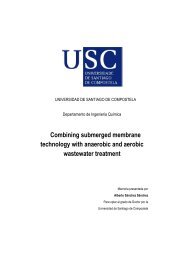You also want an ePaper? Increase the reach of your titles
YUMPU automatically turns print PDFs into web optimized ePapers that Google loves.
9.3 PLATON - ANALYSE Menu <strong>WinGX</strong> <strong>v1.64</strong><br />
Potential hydrogen bond donors are checked for the presence of suitable<br />
acceptors using commonly used (Jeffrey) H-bond criteria. As a general rule<br />
there should be an acceptor for each donor. Exceptions are very rare for O-<br />
H and more common for -NH and -NH2. A common error is an -OH on a<br />
calculated position pointing in the wrong direction.<br />
_430 : Test for short intermolecular D..A distances<br />
This test alerts for possibly missed hydrogen bonds as indicated by short<br />
(i.e. shorter than sum of the van der Waals radii - 0.2) donor - acceptor<br />
distances.<br />
_431 : Test for short intermolecular Hl...D distances<br />
This test reports on short intermolecular halogen .. donor/acceptor atomtype<br />
distances.<br />
_432 : Test for short intermolecular distances<br />
This test reports on short intermolecular atom-type distances falling in<br />
anather class than alerts _430, _431.<br />
_601, _602 : Solvent Accessible Void(s) Test(s)<br />
Crystal structures in general do not contain large solvent accessible voids<br />
in the lattice. Most structures loose their long-range ordening when<br />
solvent molecules leave the crystal. Only when the remaining network is<br />
strongly bonded (e.g. zeolites and some hydrogen bonded networks) the<br />
crystal structure may survive. Residual voids in a structure may indicate<br />
the omission of (disordered)<br />
density from the model. Disordered density may go undetected when smeared<br />
since peak search programs are not designed to locate maxima on density<br />
ridges. The presence or absence of residual density in the void may be<br />
veryfied on a printed/plotted difference Fourier map or with<br />
PLATON/SQUEEZE. Voids of 40 Ang**3 may accommodate water. Small molecules<br />
such as tetrahydrofuran have typical volumes in the 100 to 200 Ang**3<br />
range.<br />
_601 : This test reports the volume of the largest solvent accessible void<br />
in the structure.<br />
_602 : This test reports on a void, too large for the current PLATON<br />
version<br />
for more detailed analysis.<br />
_701, _702, _703 Check for consistency of derived geometry and coordinates<br />
The bond distances, angles and torsion angles given in the CIF are crosschecked<br />
with corresponding values calculated from the coordinates. Alerts<br />
are set at 1,2 and 3 sigma deviation levels.<br />
Note: Default s.u.'s are used where no su given (e.g. for C-H)<br />
In general, all differences should be within the associated su. Small<br />
differences may arise from rounding. Very large deviation (or zero<br />
distance) normally indicate incorrectly specified symmetry operations on<br />
the associated atoms, or 'cut-and-pasting' of incompatible CIF's.<br />
_704 Check for consistency of contact distance geometry and coordinates<br />
Chapter. 9.3 PLATON 39

















